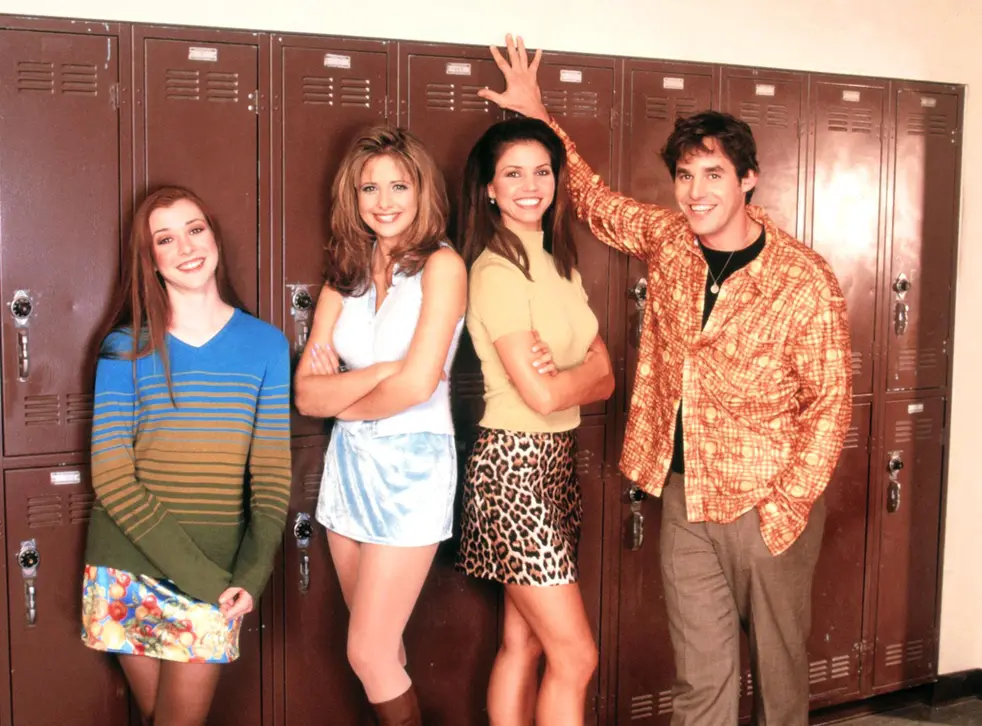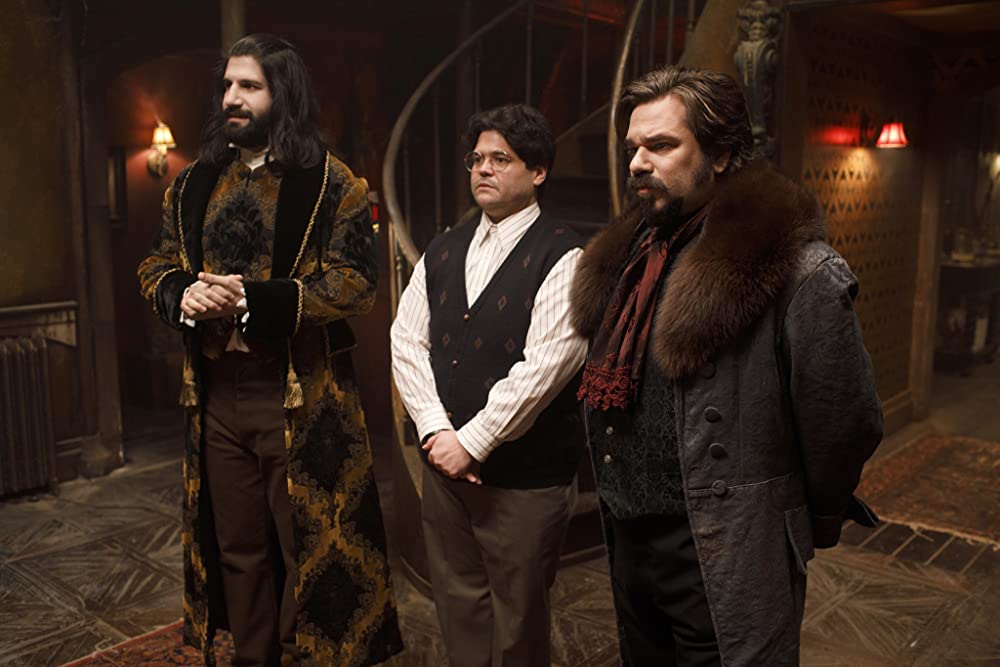Buffy the Vampire Slayer/ What We Do in the Shadows
As more media texts are made, we see genres evolve and expand in order to usher in multiple
audiences. Cultural moments, mediums, and systems of power play into how both Buffy the
Vampire Slayer (1997) and What We Do in the Shadows are a part of the same genre but different
screen presence.After viewing episode three of Buffy the Vampire Slayer (1997), it is clear that semantics,
syntactics, and pragmatics play a big part in how the show exhibits not only horror but also
coming of age.

When looking at the semantics of the text, there are multiple signifiers of the typical horror conventions, such as jump scares and low lighting. Even when looking deeper into
the plot formula of what horror texts use, the episode incorporates an ending stand-off with the
antagonist, the witch. In multiple horror texts we see everyday the antagonist and the protagonist
go head to head in order to push forward the theme of good versus evil. While the semantics
approach stays true to the horror aspect of the texts, when looking at the semantic and syntactic
approach in conjunction the show expresses more of a coming of age style. The historical
moment of the text is in the late 1990s and early 2000s. During this time, it was important for
girls to have some sort of rank in the hiahschonl social climate.
Many would turn to cheerleadingas a way of social acceptance. If you were a cheerleader then you were popular and highly likely to do something great afterwards. In the episode, Amy’s mother was so hell bent on reliving her “glory days” to the point where she turned to the dark arts in order to do something about her situation’. Instead of fixing her own life, it seemed more fitting to her that she should go back to highschool as her daughter and be a cheerleader.……again. The episode is making fun of the high expectation to become a cheerleader. Most of the time it would lead to girls going through extreme measures to get on the team, like losing a bunch of weight in a very unhealthy way.
Even when we analyze the text in the larger context of Mittell’s cultural hierarchies, it can be
said that the show is equating cheerleading to being successful in high school. It ultimately meant you were a part of this dominant culture while everyone else was supposed to be subservient. Mittell says,”If we accept that genres are constituted by cultural discourses, we need to acknowledge that those enunciations are always situated within larger systems of power…” explaining that genres are shaped based upon the cultural norms and meanings that we as a society hold dear, however, these norms and ideals are ultimately intertwined with the system of power that we reside in?, leading us to believe highschool status is key. Additionally, the episode explains the pressure on girls to live up to the precedent of what society has deemed the only way to be accepted, important, or even relevant. All in All, the show is treated more like
a coming of age than a horror show because of its heavy cultural references of highschool.

In contrast to Buffy the Vampire Slayer (1997), What we do in the Shadows has more of a
comedic resonance than horror. The semantics of the show is very much in line with horror texts.
The iconography of the film is set in a very dark mansion with multiple old relics and artifacts
laying everywhere. However, the characters themselves make the setting a little less scary due to
their comedic relief. All the horror semantics are made light-hearted and funny because of the
essence of the characters. The lightheartedness is seen through the conventions of the show
where instead of getting dark eerie music, the show has a semi-upbeat soundtrack in the
beginning. The syntactic approach allows the text to be seen as a comedy rather than a horror
which is due to the sitcom-like cuts and camera movements.
Jane Feuer’s essay on sitcoms,”Genre Study and Television” (1992), offers one of the earliest attempts to apply genre theory to the medium of television. In which she goes on to argue that it is a way to interpret the audiences’ interest in a new medium. As a result of the sitcom medium that they chose, it makes the text more in line with a comedy than horror. Furthermore, with the show being created in 2019, the show briefly expresses the injustice that is in society today which was a cultural moment of the time. This is exemplified through the scene of Nadja and Lazlo being in the park and experiencing “racial” prejudice*. All things considered, the text would be treated more as a comedy than a horror, mostly because of the medium style.
Clement, Jemaine. “What We Do in the Shadows.” Hulu, March 27, 2019. https://www.hulu.com/watch/e03add94-3392-45a3-b036-034cb00ae9d0.
Klein, Amanda Ann. “Genre.” In The Craft of Criticism: Critical Media Studies in Practice,
edited by Mary Celeste Kearney, 195-206. New York: Taylor & Francis, 2018.
Mittell, Jason. “A Cultural Approach to Television Genre Theory.” Thinking Outside the Box,
November 7, 2008, 37-63.
Whedon, Joss. “Buffy the Vampire Slayer.” Hulu, March 17, 1997.
https://www.hulu.com/watch/0a698a7c-a9d6-4f06-b547-d17a84edea7f.

No responses yet